How to Keep Your Dog Calm and Stress-Free During the Holidays
This post contains affiliate links. As an Amazon Associate I earn from qualifying purchases.

The holidays can be a joyful time, but they bring plenty of hustle and bustle. For dogs, this season often causes anxiety, with unfamiliar guests, loud noises, and disrupted routines.
Luckily, keeping them calm and content doesn’t have to be complicated. With simple adjustments, you can make this season stress-free for your furry friend.
Understanding Pet Stress
The holiday season is filled with changes, from chaotic schedules to unfamiliar faces in your home. While humans may enjoy the festivities, dogs often interpret these shifts as unsettling disruptions.
Stress in pets can manifest in various ways, making it essential to recognize and address their needs during this busy time.
Signs of Stress in Dogs
Dogs don’t communicate stress with words, but their actions can reveal plenty. If you notice unusual behaviors, it’s likely a signal something’s wrong. Here are some common signs to watch for:
- Changes in Appetite: A stressed dog may skip meals or eat less than usual. Conversely, some may overeat for comfort.
- Excessive Barking or Whining: Escalated vocalizations can be an outlet for anxiety.
- Pacing or Restlessness: Constant movement, like circling or aimless wandering, signals unease.
- Aggression or Withdrawal: Some dogs lash out or become distant when overwhelmed.
- Frequent Panting or Drooling: Stress often causes physiological changes, even in calm environments.
- Hiding or Clinging: A dog retreating to quiet spaces or refusing to leave your side could be seeking comfort.
- Trembling or Shaking: Sudden, unexplained trembling is often a stress signal.
Understanding these signs is the first step in supporting a stressed pet. If these behaviors persist, consider consulting your vet for professional advice.
For further tips on helping dogs adapt to new challenges, check out our guide on preparing your dog for back-to-school transitions.
Common Holiday Triggers for Stress
Holidays can be a sensory overload for your dog. Familiar scents and routines quickly give way to new, often overwhelming stimuli. Identifying triggers is critical to preventing stress:
- Loud Noises: Fireworks, music, and shouted greetings disrupt your dog’s sense of calm.
- Crowded Spaces: A steady influx of guests can overwhelm even the friendliest dogs.
- Change in Routine: Meal times, walks, and play sessions may fall off schedule, creating confusion.
- Décor and Clutter: New objects like Christmas trees or candles may add an element of uncertainty.
- Unfamiliar People or Pets: Strange faces and scents challenge your dog’s comfort zone.
- Travel Stress: Long car rides or flights can unsettle pets accustomed to routine environments.
Minimizing these triggers is key to keeping your furry friend at ease.
For additional insights into holiday pet care, explore our guide on pet safety during the holidays. Small adjustments to your plans can make a big difference for your pet’s well-being.
Creating a Calm Environment
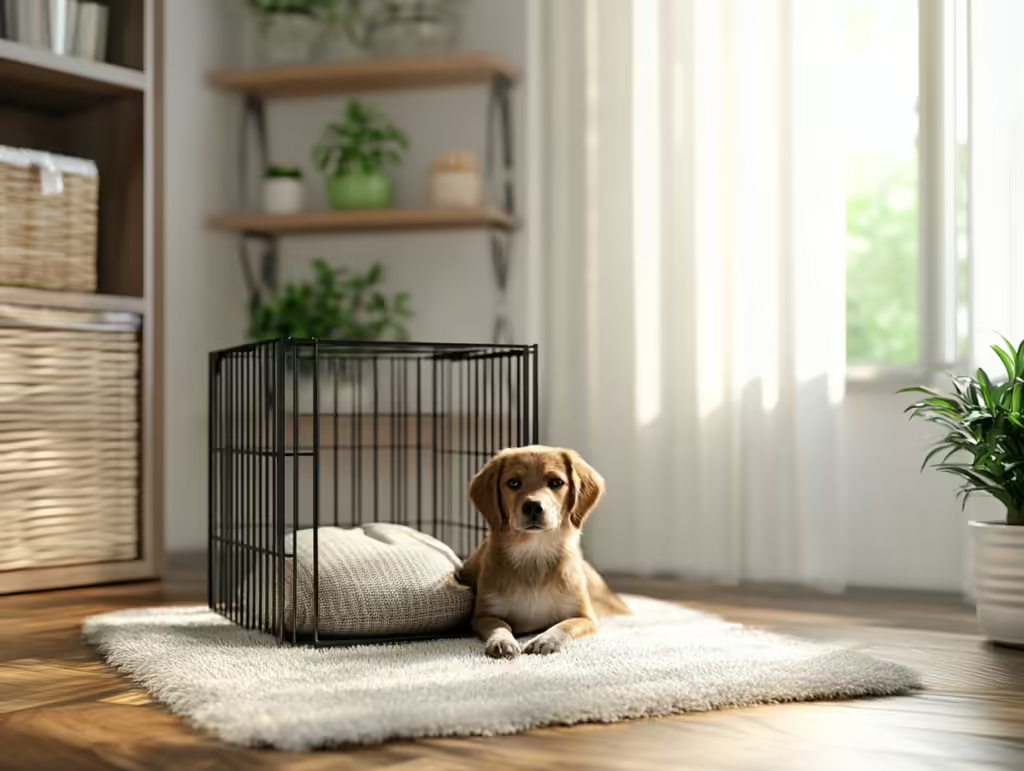
The holiday buzz can be overwhelming for your dog. From noisy parties to sudden changes in routine, it’s easy for stress to creep in.
Creating a calm environment is essential to help your pet feel secure and relaxed during this busy time.
Safe Spaces for Your Dog
Having a quiet retreat for your dog is one of the best ways to reduce holiday stress. Just like humans enjoy a comforting nook to escape the chaos, dogs need their own sanctuary.
- Choose a low-traffic area in your home, such as a spare room or cozy corner.
- Block out noise by shutting doors or using white noise machines. I use Alexa and set it to ‘calming dog music’.
- Reduce overstimulation further by dimming the lights or using blackout curtains.
By giving your dog a safe space to unwind, you can significantly ease their anxiety. For a similar approach during celebrations, take a peek at our article on keeping pets safe on New Year’s Eve.
Comfort Items to Provide
Once you’ve designated a quiet spot, make it inviting with familiar comforts that soothe your dog. Just as a favorite blanket can bring calm to a person, small comforting touches make a difference for pets too.
Here’s what to include:
- Soft Blankets: Create a warm and cozy resting space.
- Favorite Toys: Provide their most-loved chew toys or stuffed animals.
- Chewing Aids: Stress-relief chews or bones can promote relaxation.
- Pheromone Sprays: Consider a calming spray designed for pets.
A well-prepped space filled with items your dog loves will help them feel secure. As a bonus tip, play soft, soothing music to create a peaceful atmosphere. For more ideas about managing pet stress, visit our guide on Halloween safety tips.
Maintaining Routine and Structure

Holidays can disrupt life, and dogs sense these changes quickly. Maintaining a consistent routine gives them stability, even in the busiest times. Pets thrive on predictability, and keeping their day-to-day structure intact can drastically reduce holiday-related stress. Here’s how you can ensure your dog feels balanced and secure this season.
Feeding and Exercise Routines
Dogs function best when their feeding and exercise schedules stay consistent. A sudden delay in dinner or skipping their usual walk might seem minor, but to a dog, it can feel disorienting. Structure helps them feel grounded, especially amid holiday chaos.
- Stick to Regular Feeding Times: Serve their meals at the same time you always do. If your schedule changes, try to adjust while staying close to their normal eating habits.
- Maintain Daily Walks: Even if you’re busy, prioritize their walks as these moments help release energy and combat stress.
- Incorporate Play Sessions: Play doesn’t have to be lengthy—quick fetch or tug games can help reset their mood.
By being consistent, you reassure your pet that their basic needs are still a priority, even during unusual circumstances.
Training and Commands to Reinforce
During holidays, unfamiliar guests, loud sounds, and new environments can make your dog feel out of control. Reinforcing basic commands gives them clarity, helping navigate these changes with confidence. A dog familiar with instructions like “sit” or “stay” is less likely to feel overwhelmed.
- Practice Daily Commands: Dedicate 5-10 minutes each day to going through basic commands with positive reinforcement.
- Prepare for Guests: Focus on commands like “leave it” or “place” to guide your dog when excitement rises.
- Reward Calm Behavior: A calm response to a trigger should be praised, reinforcing desirable actions.
This consistency not only provides structure but also strengthens your dog’s bond with you. For more effective training tactics, check out these 10 best dog training tips.
By sticking to routines and reinforcing commands, you create a framework your dog can depend on—even when everything else feels unpredictable.
Managing Holiday Gatherings
The holiday season brings joy, but for dogs, it can also bring chaos and stress. From bustling guests to scattered decorations, this time of year transforms your dog’s environment, which can feel overwhelming. By managing gatherings thoughtfully, you can help your beloved pet stay calm and comfortable.
Introducing Guests to Your Pet
Meeting new people can be intimidating for dogs, especially during a lively holiday gathering. A stressed dog might bark excessively, hide, or show signs of unease. With a little thought, you can make introductions smoother for everyone involved.
- Give Your Dog Space: Let them approach guests on their own terms. Encourage visitors not to rush interactions.
- Share the Basics: Brief your guests about your dog’s personality—whether they like head scratches or need a bit of time to warm up.
- Use Treats as Icebreakers: Have your guests offer treats to build positive associations. This can help even shy dogs feel more at ease.
- Monitor Body Language: Watch for signs like tucked tails or avoidance. If your dog seems uncomfortable, guide them to a quieter spot.
For more strategies on handling new environments during the holidays, visit our guide on traveling with your pets during the holidays.
Setting Boundaries During Celebrations
Big gatherings can result in overstimulated dogs, turning what should be a happy day into one filled with stress. Establishing boundaries ensures your pet has a peaceful space to retreat to when things get overwhelming.
- Designate a Quiet Zone: Pick a specific room where your dog can relax, away from noisy socializing. Include their bed, toys, and maybe some music or white noise.
- Use Baby Gates or Crates: If your dog feels safer with barriers in place, create a physical boundary to shield them from too much activity.
- Limit Table Scraps: Assign a family member to ensure guests don’t sneak food to your pet, as unfamiliar treats can lead to upset stomachs.
- Post Guest Guidelines: Politely remind attendees to respect your pet’s boundaries—whether it’s refraining from petting or knowing not to disturb their quiet zone.
Providing clear guidelines for both your guests and your dog is the secret to balancing festive chaos with your furry friend’s comfort.
Using Calming Solutions
During the holidays, your dog may feel overwhelmed by constant activity, unfamiliar people, and changes in routine. Calming solutions can play a key role in reducing their stress.
From natural remedies to professional help, there are plenty of supportive avenues to explore for keeping your furry friend relaxed.
Natural Remedies for Stress Relief
If your dog appears anxious, natural calming aids might offer the relief they need. These solutions can be subtle but effective in creating a sense of calm.
- Calming Collars: Infused with pheromones or essential oils, these collars release scents that soothe dogs naturally.
- Supplements or Treats: Many pet-friendly chews contain ingredients like chamomile, melatonin, or L-theanine, which promote relaxation. My favorite is Pet Honesty Hemp Chews. I use these for my dog Cambrie all the time and they work great.
- Weighted or Compression Jackets: These snug garments mimic the sensation of a comforting hug, easing tension for many dogs. The best one I’ve found and the one I’ve used for at least a decade is Thundershirt.
Always check product labels and consult with your vet before introducing new remedies to ensure safety and suitability. If you’re traveling over the holidays, consider additional helpful tips in The Ultimate Guide to Dog Travel Essentials.
Professional Help When Needed
Sometimes, natural remedies aren’t enough to fully address holiday stress in dogs. Recognizing when to seek professional guidance is crucial.
- Persistent Anxiety: If your dog’s stress doesn’t subside with time or basic interventions, it’s worth consulting your veterinarian.
- Behavioral Changes: Aggression, extreme withdrawal, or destructive behavior may require input from a veterinary behaviorist.
- Medication: For severe cases, your vet might recommend temporary medications to help manage holiday-induced anxiety.
Professional advice ensures your dog gets the individualized care they need.
Ultimately, a blend of natural and professional solutions can transform your dog’s holiday experience from stressful to serene.
Traveling with Your Pet During the Holidays
Holiday travel can be overwhelming, especially when you’re bringing your dog along. With proper planning, you can keep your pet safe, comfortable, and stress-free while on the move. From preparing for road trips to finding the best accommodations, here’s how to make holiday travel with your furry friend seamless and enjoyable.
Preparing for Road Trips with Dogs
Traveling by car with your dog requires more than just packing their leash. Safety should always come first. A well-prepared journey ensures both you and your pet have a smooth experience. Here’s a quick guide to keep things under control:
- Use a Pet Restraint System: Always secure your dog with a crash-tested crate or a travel harness that attaches to the seatbelt. This keeps them safe during sudden stops or accidents. Learn more safety tips in our article on ensuring your dog’s safety on the road.
- Pack Essentials: Bring items like water, collapsible bowls, waste bags, their favorite toys, and a first-aid kit. Don’t forget any medications your dog may need.
- Plan for Breaks: Stop every two to three hours for potty breaks and a quick stretch. This reduces restlessness and keeps their bladder in check.
- Keep the Car Comfortable: Ensure proper ventilation and avoid leaving your dog in the car unattended, even on cooler days.
A calm car environment and careful planning can turn what might feel like a logistical nightmare into a manageable, even enjoyable, trip.
Staying in Pet-Friendly Accommodations
Finding pet-friendly lodging during the holidays can be tricky. Not every hotel, lodge, or rental property welcomes dogs, so it’s essential to do your research in advance. Here are some tips to get started:
- Check Policies: Confirm the property’s pet policy ahead of time. Some only allow small dogs or have breed restrictions. For helpful research tips, visit our guide on preparing for travel with dogs.
- Look for Amenities: Choose accommodations that offer perks like dog beds, feeding mats, and nearby walking paths. Certain properties go the extra mile, offering dog-friendly menus or play areas. Our feature on top fall dog-friendly destinations highlights such options.
- Pack for Your Stay: Bring familiar items like your dog’s bed, blankets, or toys to make their stay as cozy as possible. Avoid relying on the property to provide all your pet’s needs.
- Follow the Rules: Keep your dog leashed in public areas and clean up after them. A good guest ensures pet-friendly spots remain open for others.
With the right accommodations, your dog can enjoy the holidays just as much as you do—stress-free and surrounded by the comforts they know and love.
Wrapping Up Tips for Stress-Free Pets
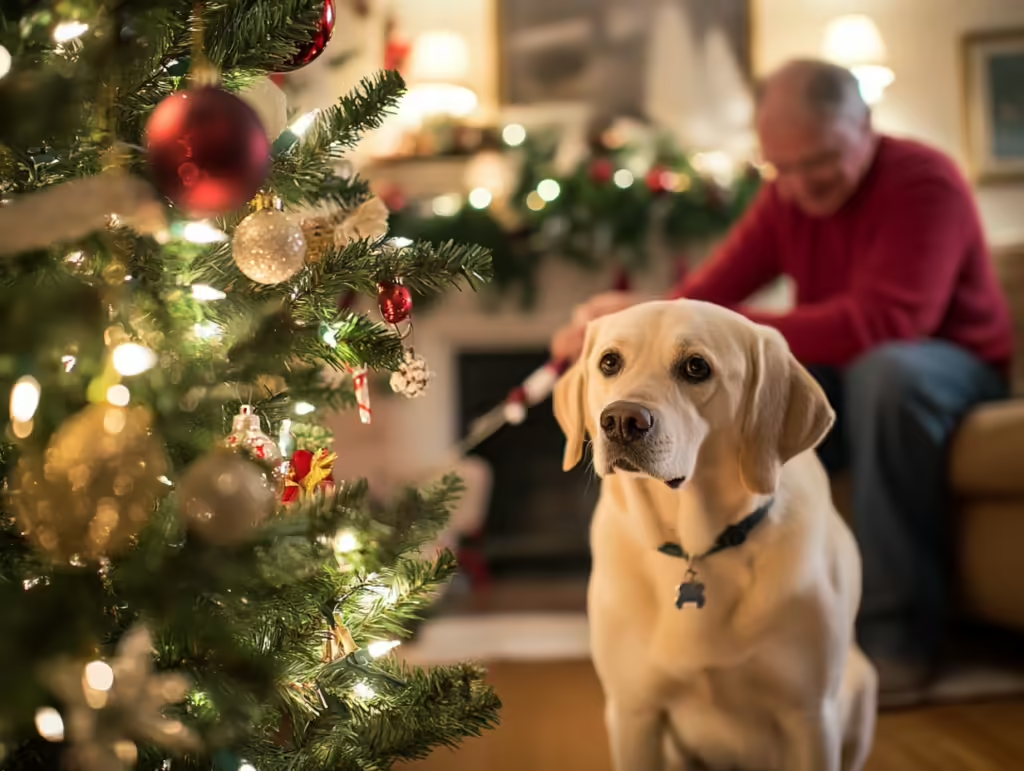
Keeping your dog stress-free during the holiday season takes effort but comes with huge rewards. Your furry friend deserves to feel as safe and loved as possible during this bustling time. From setting up cozy retreats to maintaining routines, small actions can have a big impact on their well-being.
Final Reminders for a Calm Holiday Season
Here are some key takeaways to help your dog navigate the holidays with ease:
- Stick to Routines: Consistency in walks and meals helps provide stability.
- Create Safe Spaces: Designated quiet areas give pets a break from the chaos.
- Engage in Positive Reinforcement: Reward calm behavior to reinforce stress-free habits.
- Consider Calming Aids: From natural remedies to vet advice, options abound for anxious pets.
- Manage Holiday Gatherings: Set boundaries and introduce guests slowly for your dog’s comfort.
For more holiday-specific tips, check out our complete pet travel safety guide. By planning ahead and staying attuned to your dog’s needs, you can ensure that the holiday season is enjoyable not just for your family, but for your loyal companion too.
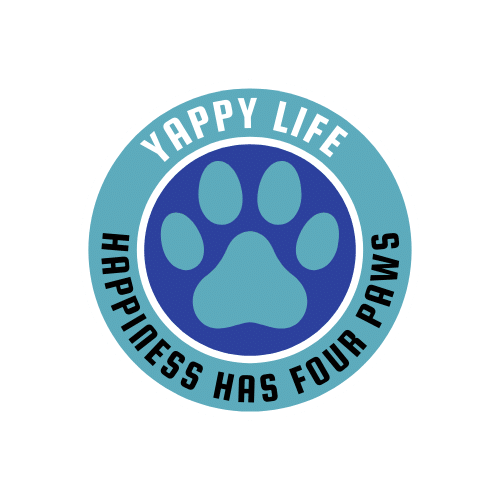


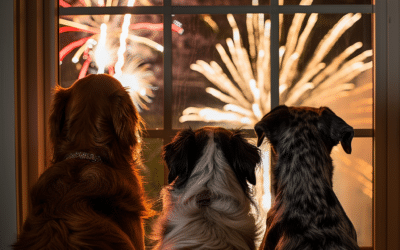
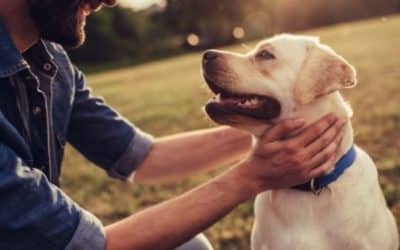
Recent Comments